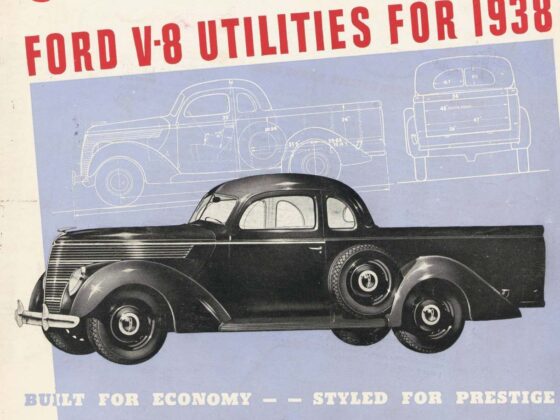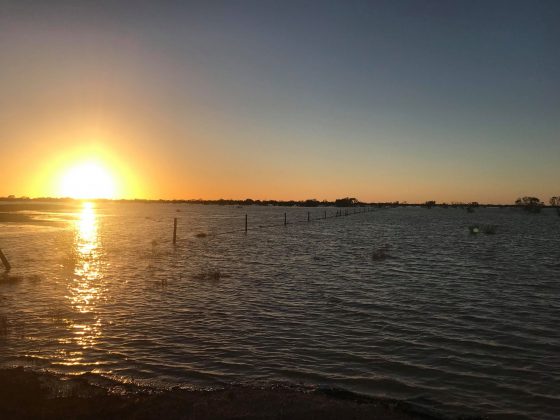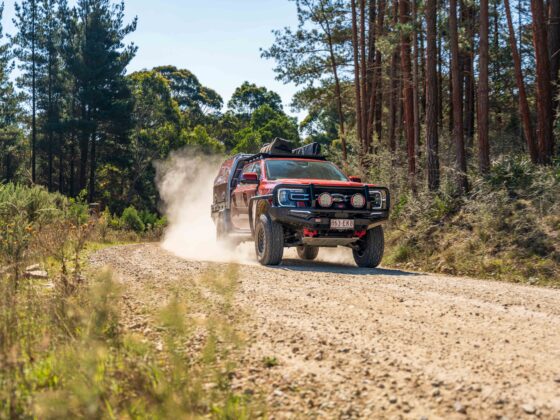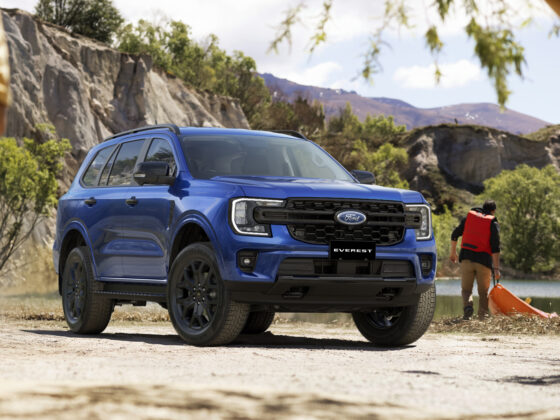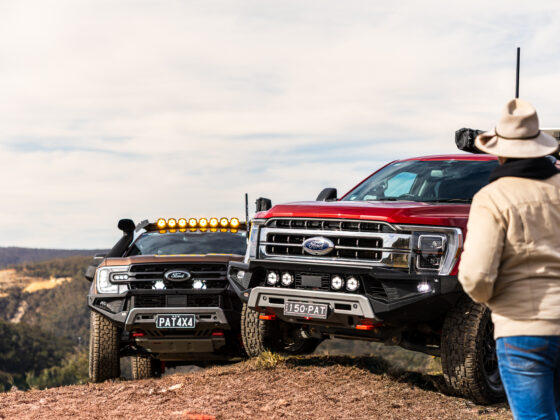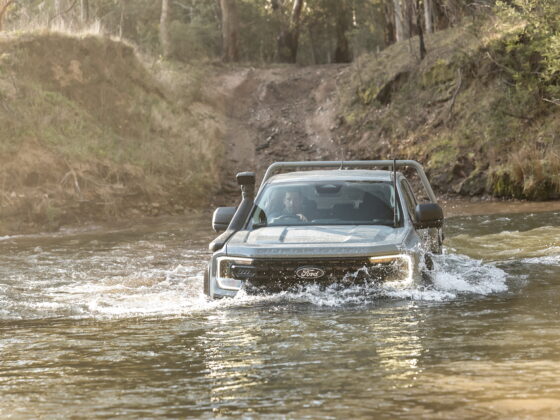IN BRIEF
- Front and rear lockers
- 33-inch rubber and suspension lift
- 4.5-tonne GVM, 4.5-tonne Towing Capacity & 8-tonne GCM
- Manual DPF-regeneration
- In-built tray scales
- 3.0-litre V6 Turbo Diesel and 10-spd auto, both recalibrated to regular Ranger
- Stock Snorkel
- Available in Super Cab and Dual Cab with Styleside
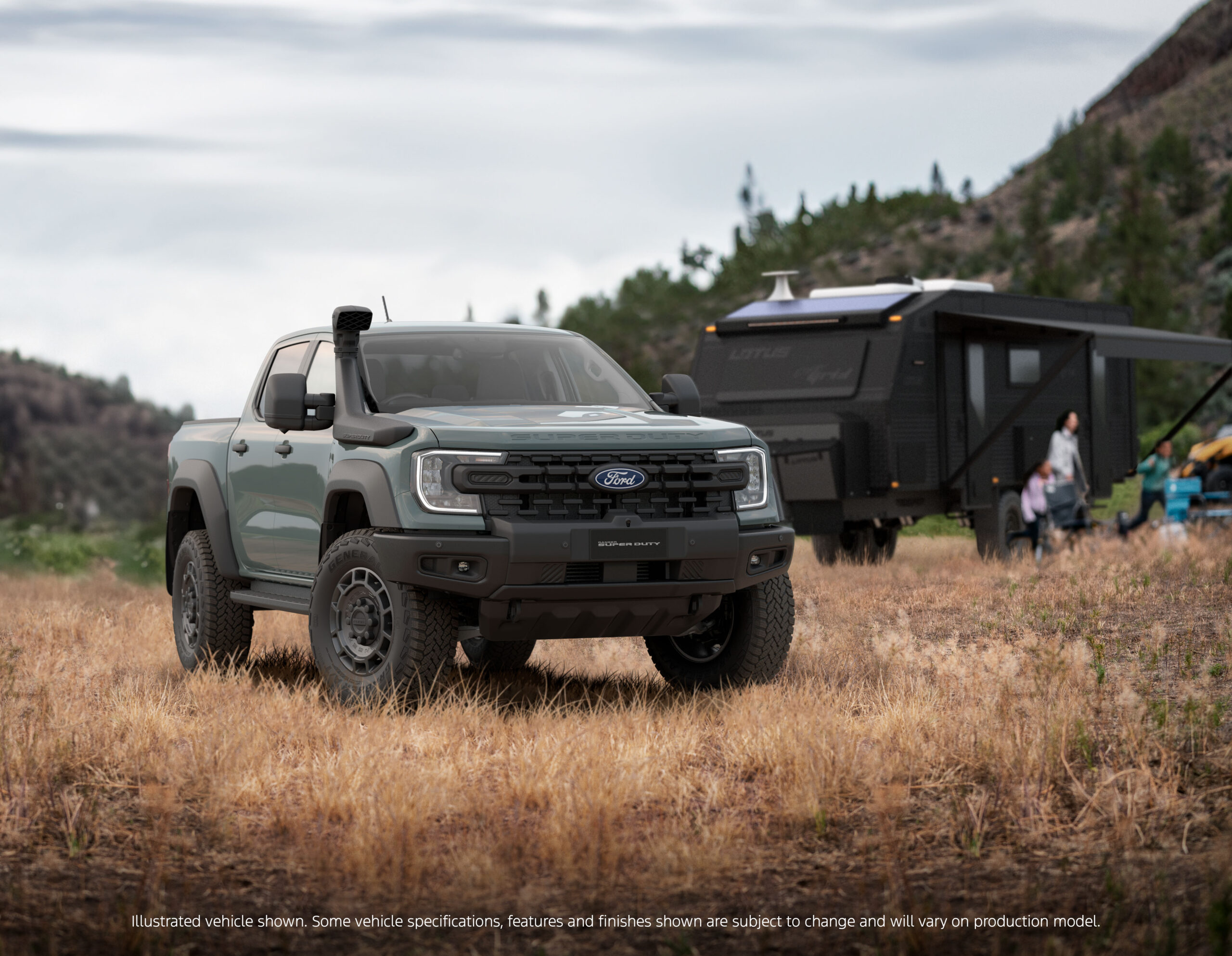
I’ve just come from the first sneak peek of the Ranger Super Duty, and can safely say that this is not only the launch of the year, but the launch of the decade. Big claims indeed, but keep reading and you’ll find it hard to argue.
The mainstream media will justifiably talk about the astounding features of the Ranger Super-Duty. The 4.5-tonne towing capacity, 4.5-tonne Gross Vehicle Mass, and whopping 8-tonne Gross Combination Mass – all of which are really quite incredible for this mid-sized ute market. These are features that almost every 4X4 and caravan tourer would dearly love. Yet as I found, the real interest is in the details. Features that have long been lacking in the 4X4 market have been splashed into this particular vehicle in one hit, and seemingly without warning. So grab a cuppa, sit back and soak this up, because it’ll take a while to explain the minutiae.
When the Next-Gen Ranger was in the planning stages, Ford went to the everyday dual cab owners to find out what they valued, and what they didn’t. The result is history, capturing best-seller status month after month, eclipsing even the much-loved HiLux.
Yet with the Ranger Super Duty, Ford went to a different customer base – fleets. The folks who haul and tow heavy stuff for a living, often in some pretty inhospitable places. I’m talking firefighters, bore drillers, arborists – folks who often tow and carry things that are, by our nation’s road rules, often illegally heavy. It just so happens that the traits that Ford have built into the Super Duty are equally, if not more, relevant to the 4X4 and caravan market. Ford could have easily just thrown in some heavy springs and a new rear diff and been done with it, but they didn’t do that. As you’ll see, they went the whole nine yards, building something so comprehensively different to every other mid-sized dual cab on the market that it will be very difficult to copy. So don’t expect competitors anytime soon.
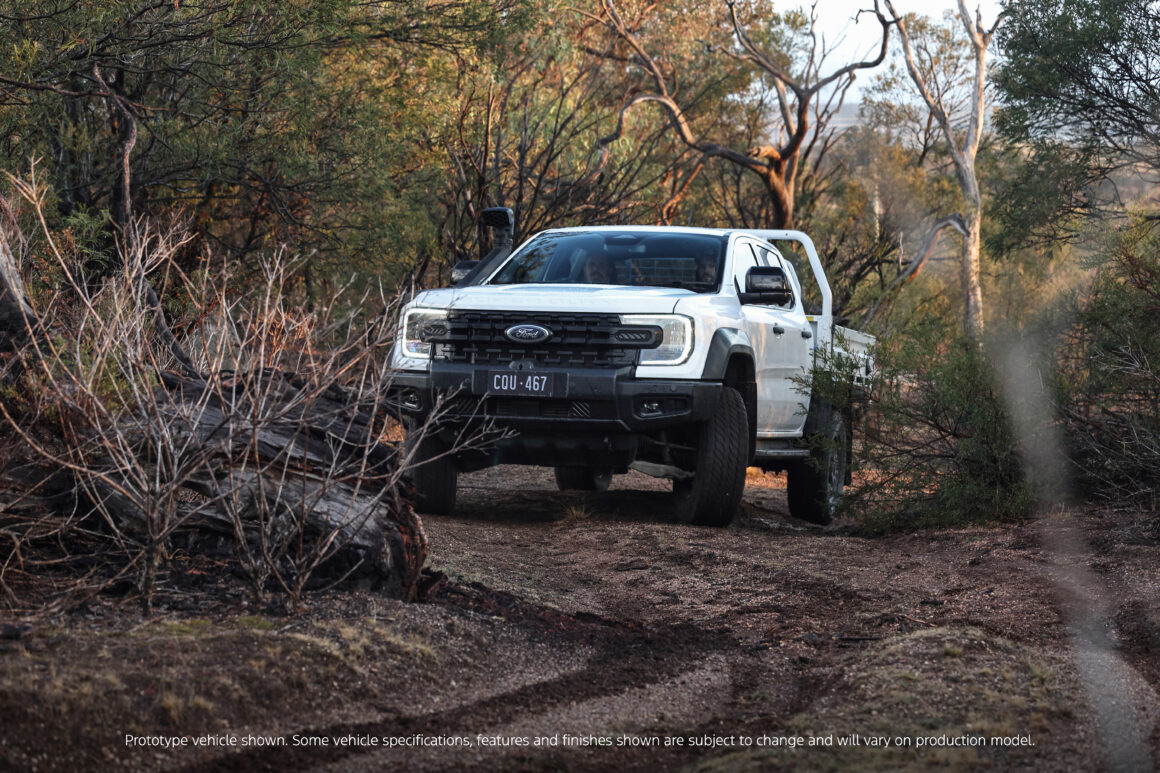
OFF-ROAD
The Super Duty sits higher than the regular Ranger, and as such benefits from increased ground clearance and approach and departure angles. Lift is gained through the springs, whose mounts are also placed wider than before to accommodate the wider axles. So she has a broader stance now – think Ranger Raptor. New forged alloy A-arms have been engineered to give the front-end its extra width. The shock absorbers have been enlarged too, but they lack the remote reservoirs of the race-inspired Raptor.
Additional lift is thanks to the 33-inch rubber, or more specifically 275/70R18. Yet I have it on good authority that you can fit 35-inch rubber, with no additional lift or guard mods. Whether you actually need it is up to you. But damn, 35s with no lift? How cool is that!
The rear Ranger axle has always benefited from a cross-axle differential lock, but they’ve now added one for the front axle as well. Talk about capable.
Differential breathers have been installed for water crossings, and their height elevated to take into account the increased wading height. It will be around the 850mm mark, bringing it in line with the Ranger Raptor. A snorkel will be installed in all models as well, utilising an Australian Safari snorkel.
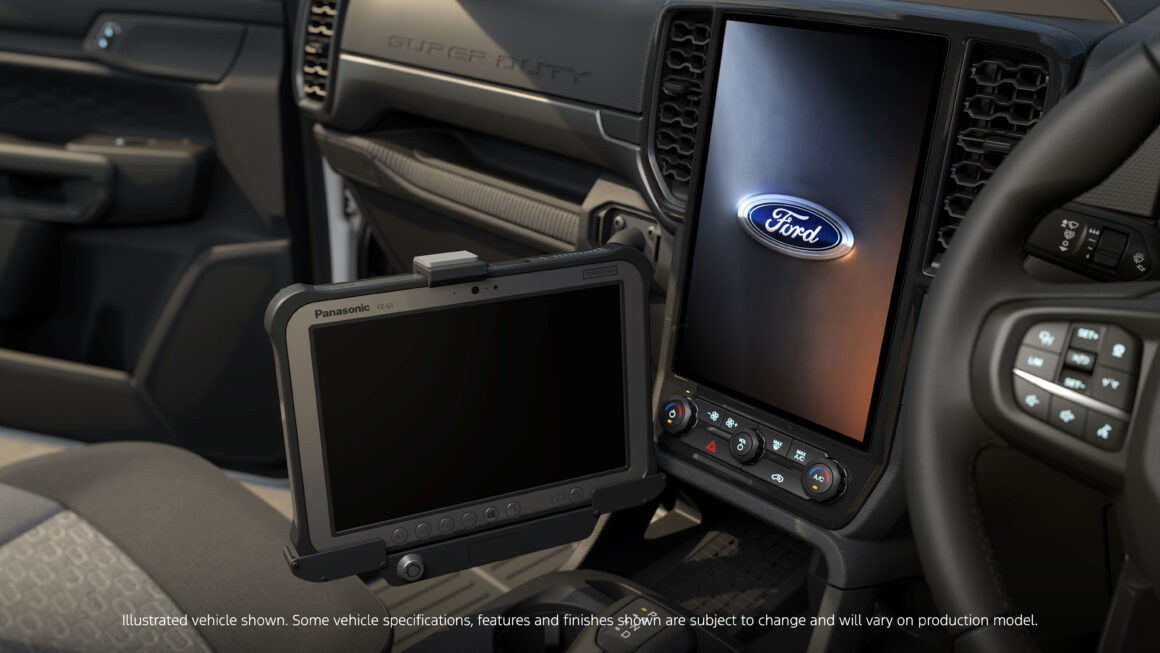
The underbody of the Super Duty is well protected, with a 5mm bash plate protecting components like the massive 130-litre fuel tank. Ford’s engineers tell me that the bash plate thickness was dictated so that the vehicle could be protected even at full 4.5-tonne GVM capacity. The chassis has been strengthened to accommodate the new heavy-duty componentry, which includes beefed-up axles, differentials and hubs. New eight-stud hubs are even a step-up on the F-150.
Up front is a steel bumper bar, along with dual rated recovery hooks. Even the recovery hooks have been rounded off to accept soft shackles. Goodness, it’s like they consulted a four-wheel driver when engineering this thing. Outrageous!! 😉
Auxiliary switches have been installed into the overhead console, making the wiring of aftermarket accessories like driving lights a breeze.
In addition to the twin lockers, Trail Turn Assist software has been included in the Super Duty, making for extremely tight turns off-road. I’ve sampled it in the Ranger Tremor, and it’s super cool on tight tracks. On top of that is Trail Control, which is akin to off-road cruise control. With the lockers engaged in slow and rocky terrain, this will be one seriously capable vehicle.
TOWING
It’s hard to overstate the towing prowess of the Ranger Super Duty. A Gross Combination Mass of 8-tonne – say whaaaaat? A towing capacity of 4.5-tonne??? I can’t wait to try that out.

Ford have gone for the 3.0-litre turbo diesel, mated to their 10-speed automatic transmission. Stats on this engine are yet to be released, but we do know that it’s the same engine as the regular Ranger, but recalibrated to cope with the heavy-duty nature of the Super Duty. AdBlue has been included across the Super-Duty range, which is a requirement for the N2 vehicle category. Cooling capacity has been improved by 25%, thanks to beefed-up radiator fans (from 850W to 1000W). Engine mounts have been strengthened, and the braking system has been upgraded.
Early incarnations of this V6 diesel engine had some reliability issues, but Ford say they’ve been making running changes to the engine that have already been implemented into the regular Ranger models. So by the time the Super Duty launches in 2026, you would like to think that the engine will be sorted. Power and torque is certainly ample, and if Ford can nail the reliability, the Super Duty Ranger has the ability to become somewhat of a cult 4X4.
The Super-Duty also benefits from a Smart Hitch, which senses the downball load. It’s essentially a set of onboard scales, which can tell the driver handy things like whether they’re over or under GVM, or whether their towed load is unbalanced. Seriously game-changing tech for this category.
A ‘Driver Assist Technology Bar’ also allows modifications like trayback canopies to seamlessly integrate into the vehicle, with all of the sensors working properly. So no longer will your aftermarket operator have to deal with the relocation of blind spot monitoring and parking sensors, let alone 360-degree cameras.

COOL AND UNEXPECTED
In a first for the dual cab market is manual DPF regeneration. This is a requirement for the N2 vehicle category, but for your average four-wheel-driver it’s simply awesome. If you have a few weeks of short-run driving, rather than getting the DPF clogged and limping into the dealer, you can sort your rig out yourself.
Other practical features are vinyl flooring and reinforced wheel arch liners that have been screwed in, not riveted. So not only will they be less likely to fail, they’ll be easy to replace if they do. Inside the Ranger, there is a new device mount up on the dash, which is a great place to mount things like navigation screens or UHF handsets, without butchering the dash. The vehicle jack has also been upgraded to handle a vehicle that could weigh as much as 4.5-tonnes.
And there’s a 400-watt inverter installed, so you can charge your gear from the vehicle. No second battery has been installed, but there is room for two batteries. It’s also worth mentioning that if you do fit auxiliary batteries, they’ll be charged quickly thanks to the 250A alternator. Most dual-cabs are lucky to have a 120-amp alternator, and some sit at around the 90A mark.
Ford have teamed up with accessory partners like ARB and Mits Alloy to ensure the accessories fitted don’t adversely affect the vehicle, or the warranty. The programme is called Ford Pro Converter, and around 130 different companies have been given detailed technical information and CAD drawings, so they can have parts ready for the vehicle launch next year.
The Super Duty will be available at launch in one specification and five colours. You can choose from white, black and silver, or my favourites Seismic Tan and Traction Green.
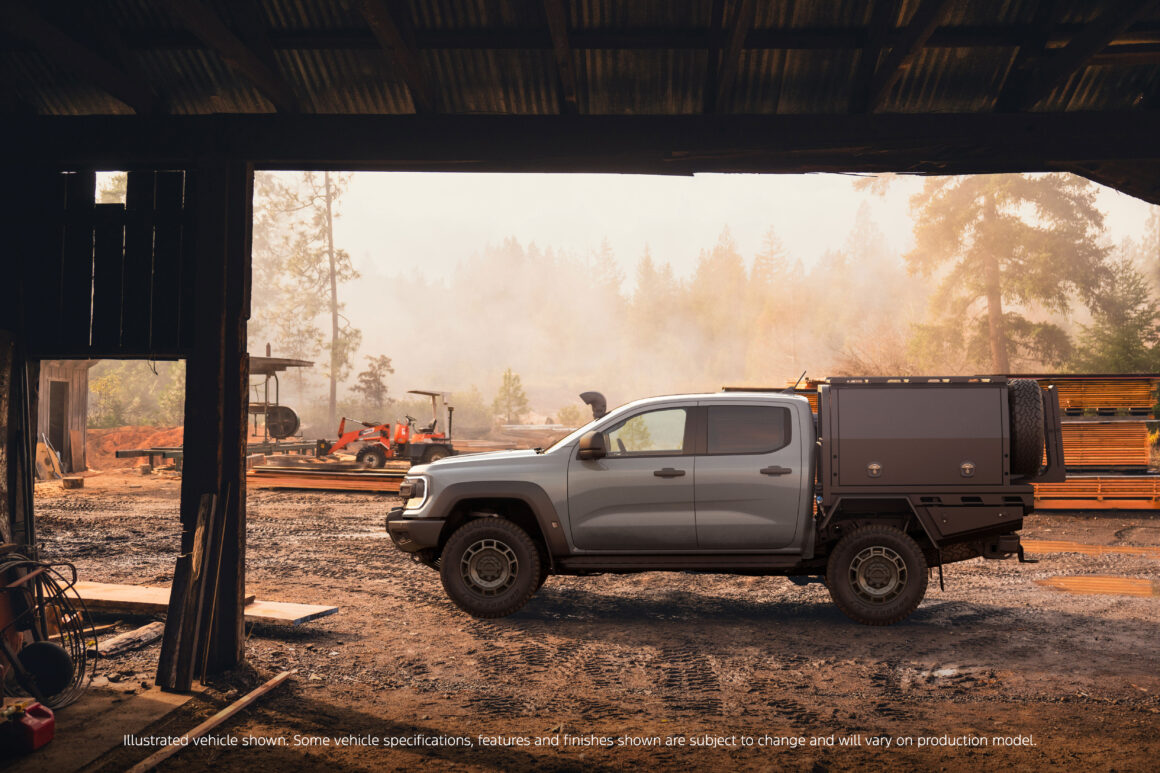
WHAT WE DON’T KNOW
Given the vehicle won’t be launched until 2026, Ford are keeping a few details to themselves. Price is anyone’s guess, but I believe if they can keep it around the $90K mark, they will sell plenty. We also don’t know the payload or the kerb weight. My guess? Around 2.45-tonnes.
THE FINAL SAY
The Ranger Super Duty is designed here in Australia by the Ford Australia Design team. It’s incredibly easy to criticise vehicle manufacturers for the shortcomings of their product, and in Australia, it’s like a sport! Yet in this case, Ford should be seriously congratulated for raising the bar of what is possible. They did it previously with the Ranger Raptor, a vehicle that is yet to be challenged in its price category. Yet with the Ranger Super Duty, in my opinion, they have gone one step further, building a vehicle that is engineered specifically for our country and our needs. So often, manufacturers ignore our small market. No diesel Patrol… skinny rear axle on the 79… sticker pack HiLuxes… If the Ranger chassis and engine can handle the additional bulk and promise reliability, this will be a mic-drop moment for Ford Australia. The Ford team should be congratulated for their efforts, because they are quite momentous indeed.




